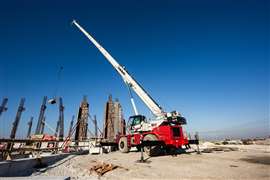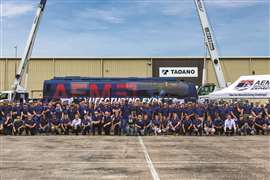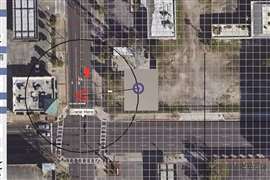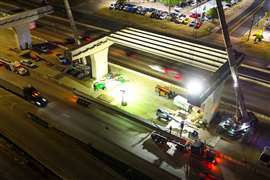Link-Belt RT at work on major restoration project
19 September 2023
USA-based DC Crane Service has used a Link-Belt 85 ton capacity (77 tonne) rough terrain crane for work on the Everglades Restoration Act project.
 The 85|RT is supporting general construction for the restoration project. (Photo: Link-Belt)
The 85|RT is supporting general construction for the restoration project. (Photo: Link-Belt)
The US$10.5 billion restoration project is part of an ongoing 35 year effort to maintain and protect Florida’s drinking water as it connects the Florida Everglades to the Kissimmee River and greater River of Grass ecosystem in South Florida.
“We chose the 85|RT because of its mobility. We needed something big enough to do the work, but small and nimble enough to drive from station to station. We can retract the boom all in and drive the five miles from station to station,” said DC Crane Service co-owner Dan Connor.
The 85|RT supports general construction at each station, handling construction materials like tall formwork and rebar cages for columns, scaffolding, and large dumpsters.
Culvert pipes 4 foot (1.2 metres) in diameter and 25 foot (7.6 metres) in length are placed at up to a 60 foot (18.2 metre) radius. The 85|RT hoists concrete pipe sections running from the newly constructed canal into the station with 95 foot (28.9 metres) of boom extended.
Fine metering
“I like the fine metering system on the 85|RT because when I’m setting the 18,000 lbs. (8.1 tonnes) pipes, I want my hoist line to go much slower than I normally use it. It’s nice having fine metering, which allows me to control the speed of the hoist line,” said operator Alex Goode.
The base of each station measures 60 foot (18.2 metres) by 80 foot (24.3 metres). Each station comprises 16 columns spaced evenly apart. The 85|RT works with full 142 foot (43.2 metres) of main boom extended, and operator Goode typically works between 45 foot (13.7 metres) and 115 ft. (35 metres) of radius.
“Because the columns are hard to see around, the hoist line camera is very useful when they only need half an inch of cable on the ground,” said Goode. “It’s pretty common to be in the blind when we are lifting the rebar cages behind existing framework, so a camera like this is important.”
STAY CONNECTED


Receive the information you need when you need it through our world-leading magazines, newsletters and daily briefings.
CONNECT WITH THE TEAM












